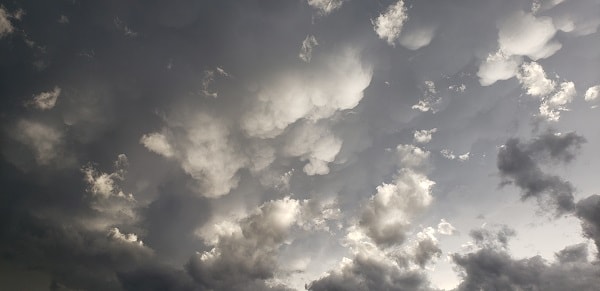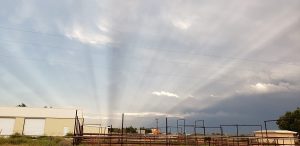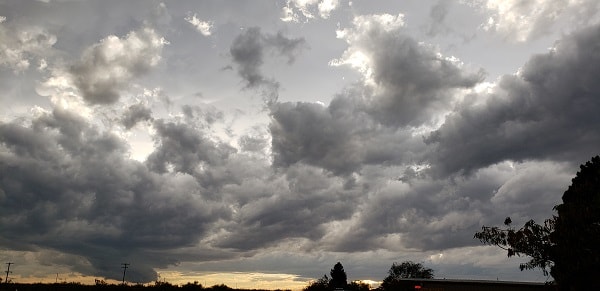Like grace, glory is one of those words that can mean many different things, making it difficult to define. I’m not even going delve into all the definitions; however, I do want to explore briefly one type of glory that can be easily overlooked. When was the last time you looked around and saw glory?

We have been getting an inordinate amount of rain for the west Texas desert. While sandy areas can absorb a fair amount, even they tend to have hard layers of caliche rock (a type of high calcium rock similar to limestone) under them. Most of the soil is typical arid/semi-arid soil with few nutrients that forms a crust on top which rain simply runs off. So, while it isn’t hurricane levels, we’ve had enough rain to cause flash floods, wash out main highways and generally make a mess.
The hurricane-level disturbances have been more internal. It’s not time yet to talk about the events, but the life and stress turmoil is between a category three and category four. This is the background to my drive home from an exhausting day of work.
It was raining when I left work. Hail was forecast. The steady rain turned into a downpour, then abruptly stopped as I drove out of that particular cloud. Looking around, I could see more storm cells, lightning and a few breaks. Dramatic skies. With luck, I figured, I could get home before the next round. One more cell caught me on the way, but it was dry when I reached home. As I dragged myself out of the car, I looked up and gasped. Glory!

The meteorological definition of glory is a circular rainbow around the shadow of a plane or similar object. But as a kid, we called the rays of sun that would break through a cloud — especially at sunrise or sunset — glory. That’s what I saw, glorious beams of light streaming in front of the dark storm clouds I’d driven away from.
But wait! These beams were in the east, and the sun was low in the west. What the– ? I grabbed my phone to take some pictures. The lighting was phenomenal with all sorts of cool clouds. After catching the glory rays, I took more pictures, then turned back to the glory rays, and (I thought) the puzzle was solved.

In the few elapsing minutes, the sun had lowered and the clouds shifted just enough to show the rays reflected off the edges of clouds, much like the moon reflects the sun.
The overall effect was that, for a few wonderful moments, I was transported from my internal and external storms to a place of wondrous beauty. A moment of freedom, of transcendence. Glory.

It’s all too easy for me to get bogged down in the daily “rain” of life, whether a sprinkle or a deluge. I’m learning to seize moments like this to stop, take a deep breath, and be reminded that there is more outside my little world. Beauty, goodness, awe. Storms end. Sunlight returns. One path is destroyed, another opens up. Taking the big or long view are important for perspective. And my perspective is sometimes quite limited. But if I take a moment to look around, by grace I can get a glimpse of a different perspective, a wider reality. And glory.
Author’s note: As I was writing this, Serendipity decided to add some humor. Season 2 Episode 11 of the television show “Strange Evidence” was playing on the Science Channel. In their usual overly-dramatic way, they examined the same phenomenon from a video from Argentina. After suggesting and debunking various theories, (death-rays, anyone?) they determined the video showed anti-crepuscular rays. An optical phenomenon, it is the sun’s rays shining through clouds and appearing to converge on the horizon similar to the lines on a road converging in the distance. So now we know the correct name for the rays. “Glory” is still easier to say.